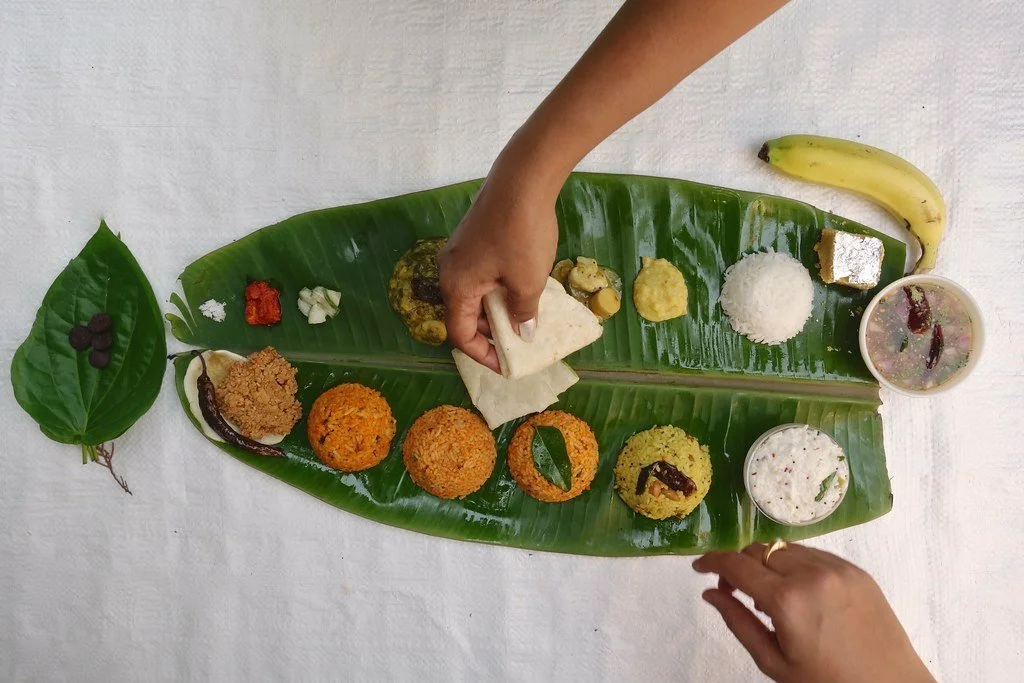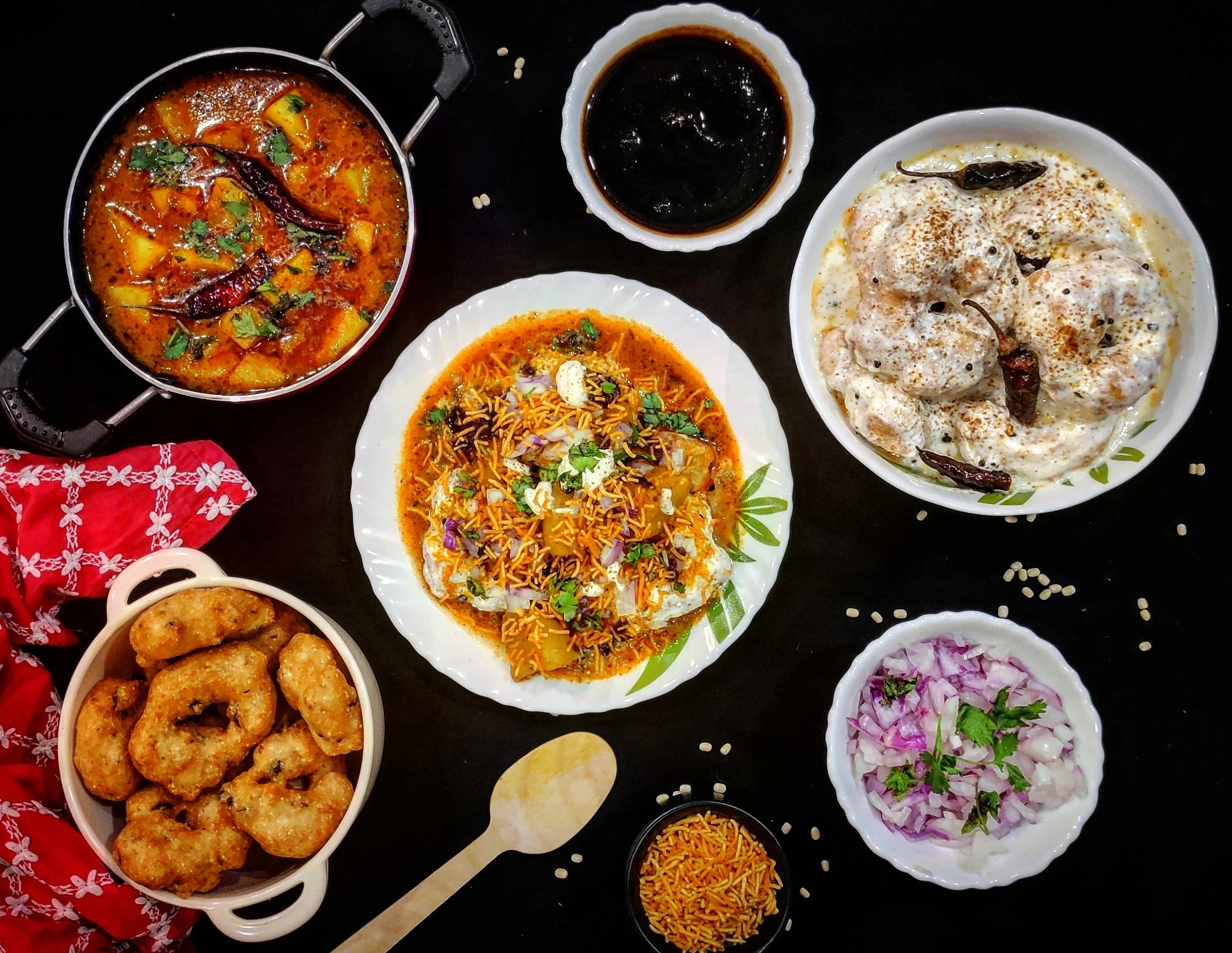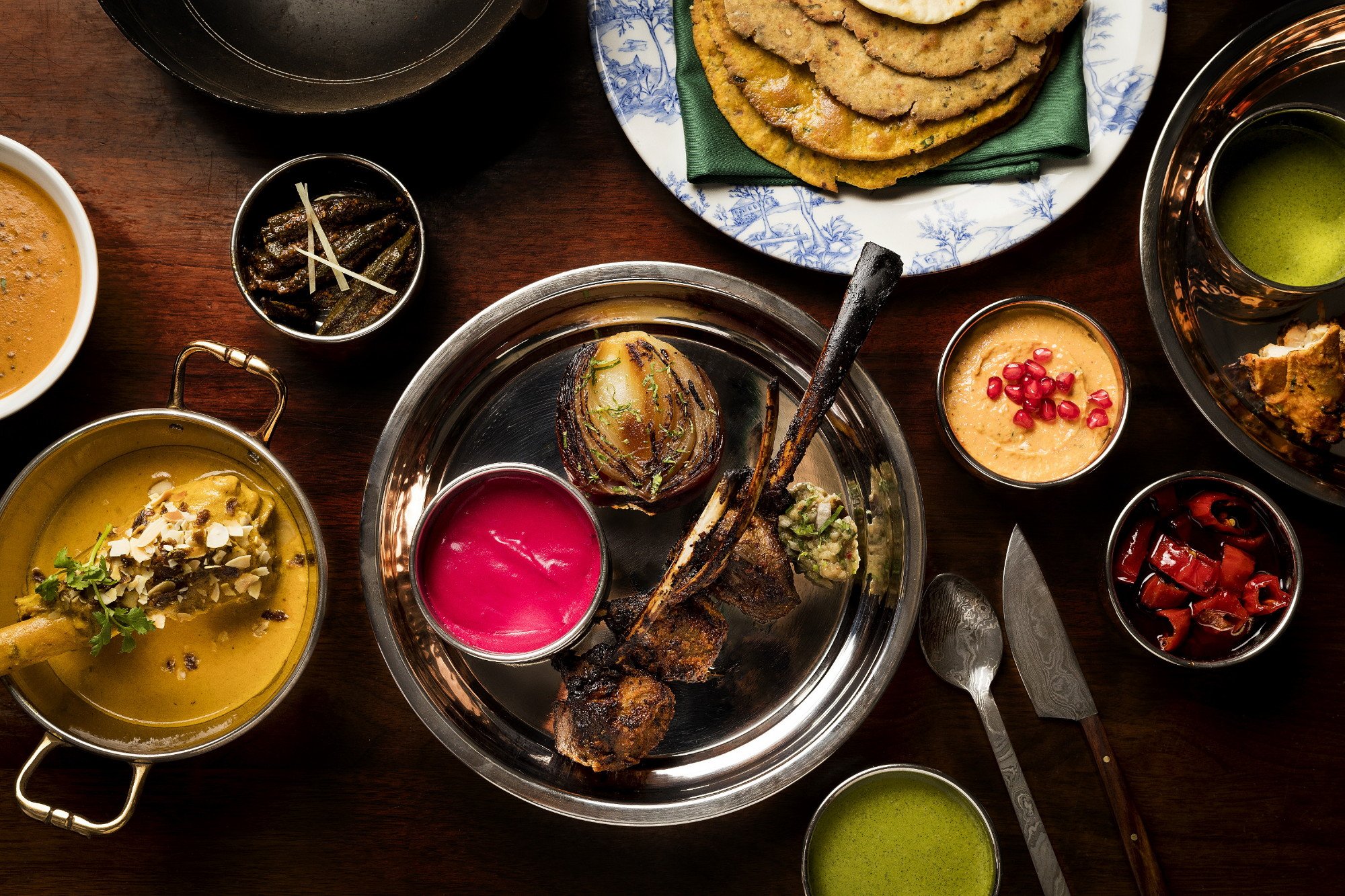From the steamed seafood dishes of coastal Odisha to the smoky meat skewers of the northern Punjab region, Indian cuisine has an incredible range to offer.
Indian cuisine.CC0.
Despite the popularity of dishes like butter chicken and naan in westernized Indian restaurants, the rich history of the Indian subcontinent actually has a surprisingly diverse cuisine that ranges far beyond the bright red curries and steaming roti that often comes to mind. Thanks to the diverse geography across the country, each region has its own go-to meats, vegetables, grains and most importantly, spices.
Indian cuisine has also been hugely impacted by its colonial history, and not just the British one that we are familiar with; the Portuguese and French also set up colonies across the southern and western parts of the country—both of which influenced the cooking styles of those regions. This, in addition to flavors from neighboring Persia, China and a variety of religious influences, have transformed Indian cuisine into a hugely popular cuisine not just across Asia, but in the western world as well.
Setting the south Indian plate. Rajesh Pamnani. CC BY-NC-ND 2.0.
The coastal state of Kerala lies on the southwestern tip of India and is most well known for its unique geography and natural beauty. This makes it an ideal travel destination for people interested in Ayurvedic healing, a centuries old natural medical technique that relies on a number of herbal remedies. Ayurvedic cooking is based on trying to re-balance the patient’s internal constitution using the six rasas or flavor profiles: sweet, sour, salty, bitter, pungent and astringent. The local food and culture are both heavily influenced by the region’s 200 years as a colony under the rule of Arab settlers, the Portuguese and finally the Dutch, which added to the large Christian population in the area.
Keralan cuisine is known for its generously seasoned seafood dishes, as well as its use of tapioca, banana leaves and most famously, coconuts. The long monsoon season in this region of the country is conducive to paddy farming, making rice and rice-flour based dishes like idli and appam, different types of rice cakes and common dietary staples. Because of its coastal location, Kerala received huge imports of spices from the Middle East, which to this day can be seen in the extensive use of cardamom, cinnamon, chili and black pepper in both seafood curries and vegetarian stews. A popular dish amongst Western travelers is vindaloo, which is the local south-western variation on a Portuguese dish known as carne de vinha d’alhos, a pork dish flavored with garlic, wine and vinegar.
Odishan pakhala platter. Lopanayak. CC BY-ND 2.0.
Formerly known as Orissa, the mountainous state of Odisha is home to more than 700 beautifully preserved Hindu temples, many of which are still in use by the state’s huge Brahman population to this day. The local food is heavily influenced by the many thriving tribal cultures as well as the religious restrictions of the social caste system, which survived despite the region being part of the Muslim Mughal empire and later the southern Marathas dynasty before coming under British rule in the early 1800s.
Because of the prominent role of religion in Odia life, most of the local cuisine is based on foods believed to be the favorites of Hindu gods so that they can be given as offerings. Most dishes are prepared with ghee, a form of clarified butter, instead of regular cooking oil, and unlike most other regional Indian cuisines, not a lot of chili is used either. The local climate is favorable for the growth of mustard leaves, which is a common flavoring agent in a number of popular curries and chutneys. Odia desserts are also very unique to the region given their heavy use of dairy products, especially paneer, a local preparation of cottage cheese. It can be deep fried with brown sugar to make jalebis and is a very popular snack because of the sugar syrup it soaks in. Paneer can also be scrambled and soaked in milk, giving it a much softer and fluffier texture before adding various flavors to make a porridge-like dish called kheer. Most commonly, the raw paneer is shaped into cake-pop sized balls and boiled in sugar syrup to make gulab jamun and rasgullas.
Traditional Meghalayan meal. Jakub Kapnusak. CC BY 2.0.
The northeastern state of Meghalaya is one of the Seven Sister States tucked between Bangladesh and Bhutan, with nearby Myanmar not too far to the east. It is located entirely on a mountain plateau and is often subject to heavy precipitation, which gives it a unique range of local vegetation. Tribal cultures are still very prominent, many of which are reminiscent of more East Asian groups due to the region’s proximity to China, which also heavily influences the local cuisine.
The two most staple ingredients in Meghalaya cuisine are rice and pork, especially when prepared with the local spice mix known as purambhi masala. In fact, local tribes even brew their own rice liquor, a clear yellow liquid called kiad that tends to contain up to 70% alcohol and is believed to have healing and curative properties. Rice noodles and dumplings made with rice paper wrappers are also very popular in the area. In parts of the state with higher altitude, locals may substitute pork for yak meat instead, which is a local delicacy that also shows the heavy influence of nearby Bhutan. Many of the local vegetable dishes make use of fermented soybeans, bamboo shoots, tree tomatoes, banana flowers and sesame seeds for texture and flavor.
Punjabi food. What The Fox Studio. CC BY-NC 2.0.
Punjab is a state located in the northwestern part of India, right on the border with Pakistan. While Sikhs make up the majority of the local population, many are descendants of Greek and Aryan invaders who came into the country thousands of years ago. The state is also completely landlocked and receives most of its irrigation from the Sutlej and Beas rivers that flow through it. This, in addition to extremely hot and dry summers, makes the area very favorable for growing wheat, which earned the state the nickname of “India’s bread-basket”.
Besides garam masala, the local spice mix composed of cumin, nutmeg, cardamom and black pepper among other condiments, pickled vegetables are a local favorite to be eaten alongside the tandoori dishes unique to Punjab. The meter-tall clay tandoor ovens are often buried in the ground and house a small wood charcoal fire at their base. They are filled with meat skewers that have been soaked in yogurt based marinades while pre-rolled naan are stuck to the sides to bake. Aside from the dry tandoori meats, Punjabi cuisine also features a variety of sauce-heavy dishes, including murgh makhani which is famously known worldwide as butter chicken. Another local favorite is kulfi, the Punjabi take on ice cream made from churned milk and sugar, often flavored with fresh mango, especially during the hot summer months.
Tanaya Vohra
Tanaya is an undergraduate student pursuing a major in Public Health at the University of Chicago. She's lived in Asia, Europe and North America and wants to share her love of travel and exploring new cultures through her writing.






